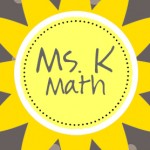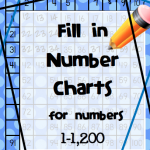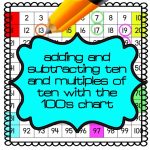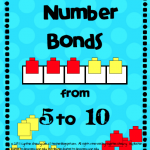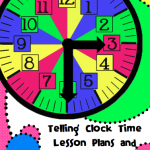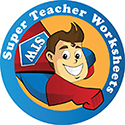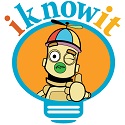Are Your Students Bored with Stickers and Stamps…Try Smellys
To reward your students, try smellys. Students love smellys. Smellys are when you put a happy face on the back of a child’s hand using scented chapstick or the like. If you have several flavors of chapstick, students will want all of the flavors on their hand. For example, if you have banana, cherry, and chocolate, students could progressively gain all of the scents during a day for their good behavior to accumulate the scent of a banana split.
A Trick to Get Your Students to Line Up Quietly
I have personally witnessed two teachers use this in their classes and it works exceptionally well. The novelty will wear off after time, but it works well for students at this point in the year when summer break and friends are all that is on children’s minds.
- Buy a feather boa.
- Tell your students to put their heads down on their desks and close their eyes.
- Tell them when you pass by and touch them with the feather boa they can line up.
This seems to have a magical effect because feathers are quiet and those who are in line are in suspense waiting to see who will be feathered next.
Do Your Students Forget to Put Their Name on Their Papers? Try this
This has proven to be an effective method to have students put their names and dates on their papers. Before taking up papers each time say, “Class, put a smiley face beside your name, and put a star beside your date.” Students all want a smiley face and a star at the top of their papers, so they will all put their names and dates on their papers. You will no longer have to tell students to put their names and dates on their papers in a frustrated monotone voice because they will do this. When students get accustomed to putting smiley faces and stars, you can change what you ask them to put beside their name and date and associate it with something they are learning. For example, have students put parallel lines beside their name and perpendicular lines beside their date if your class is studying geometry.
Too Many Papers Collecting On Your Desk? Try This
In the busy school day, papers can easily be placed haphazardly on your desk and other surfaces. To help keep papers organized, make files for each topic you teach. If you run off extra copies instead of throwing them away, keep the extras in your files. You will be able to use them for students who need extra practice, to lend to another teacher, and to use next year. Making a file for each month when the year starts will allow you to place seasonal worksheets, ideas, or bulletin board supplies in an easy to find location. If you happen to find a Valentine’s Day activity in November, you can file it in your February file and easily find it when the occasion approaches. Also, create a binder for professional development handouts, newsletters, and memos so you may easily refer to them when needed. Keep student work separated in paper trays by subject or class and immediately clip them together or put them in a folder before removing them to keep them from getting mixed up. In order to maintain organization of paper flow, make sure to set up your file system before the school year begins so that each paper will have a place. If the school year begins without a filing system, you are most likely not going to take the time to create one in the midst of the flurry of school activities, and your paper piles will rival Mt. Everest.
How Do You Foster a Positive Learning Environment? Part 2
Procedures are the expectations you have for the way your classroom runs. If you have vague procedures, then you will not have the results you desire. For example, if you want your students to quietly put their papers in the paper tray when they finish their work, you must first consider the other problems that may occur. Students may stand around the paper tray and talk. They may rush to shuffle their papers in the tray in differing directions, or they may elbow one another when they turn their papers in because they are in a hurry. Discuss these potential problems with your students, and ask students how this could cause problems…even model the wrong way to act. Then tell students your expectations and how you want them to act. Model how to walk to the paper tray, how to place the paper in the tray, what to do when there is more than one person at the tray, and how to leave the paper tray after the they have turned the paper in. Being specific about what you expect and reinforcing your expectations will yield a well-managed, positive, classroom environment.
Increase Your Students’ Achievement By Following This Tip
Classical music influences learning, memorization and spatial reasoning according to research. The limbic system in the brain which causes long term memory is affected by music. The more emotional responses one has while learning new information, the more easily the information is retrieved from the brain. Since music causes emotional responses, begin playing music in your classroom give students a learning advantage.
A source for classroom music well worth considering has been written by music educator Maribeth Alexander. Maribeth, wrote the piano music on the album entitled Creation. She has used the music with her own students, and other teachers have used her music successfully to calm their students and increase student achievement in the classroom.
Maribeth Alexander’s Creation album may be purchased on itunes or CD baby. 02 Earth Click to hear Maribeth’s album.
http://www.cdbaby.com/cd/alexandermaribeth
How Do You Foster a Positive Learning Environment Part 1?
I will state the obvious. Be prepared. I will quote an intelligent administrator in my district…”If you don’t come with your plan, the students will come with theirs.” I have watched many a teacher’s backside showing to the class as they dig for the materials needed for the lesson with the next words out of their mouth to be, “why are you talking”. If students could honestly answer, they would say, ” I was talking because you didn’t give me anything to do, and you aren’t prepared.” Having all of your materials in place and in easy reach maximizes instructional time and limits disruptive behavior.
How Can Cooperative Groups Make Your Workload Lighter?
Set up your classroom in cooperative groups to make your workload easier. If each group of four students has one captain, then that captain can manage the team. Set up materials in your room in a central location. I have found this works best if you set the materials in plastic drawers which you can buy in the office supply section of Wal-Mart. In each drawer place enough supplies for that team. For an elementary classroom, I recommend having six drawers full of crayons, six drawers full of markers, six drawers full of colored pencils, and six drawers full of four sets of scissors and glue sticks. Beside the supplies also have paper trays for each subject. Direct your team captains to pick up and return the needed supplies and papers for each activity. Give each student in a team a number 1-4. To give students equal opportunities at being team captain, change the team captain number on the board each day. Reward teams who are quick to follow directions. You can keep a running tally and reward teams with the most points for appropriate behavior. Below is an example of how you might label your team captain numbers so that the numbers rotate in a circle.
| 1 | 2 |
| 4 | 3 |
